

The design of the new railway station of Chongqing defines this new gateway to the region in terms of a “geographical” strategy. This project is both a showcase of the uniqueness and richness of the site (Yangtze
Valley) and the new urban concept of an Eco-
valley, which places the relationship between human and environment at the heart of design considerations.
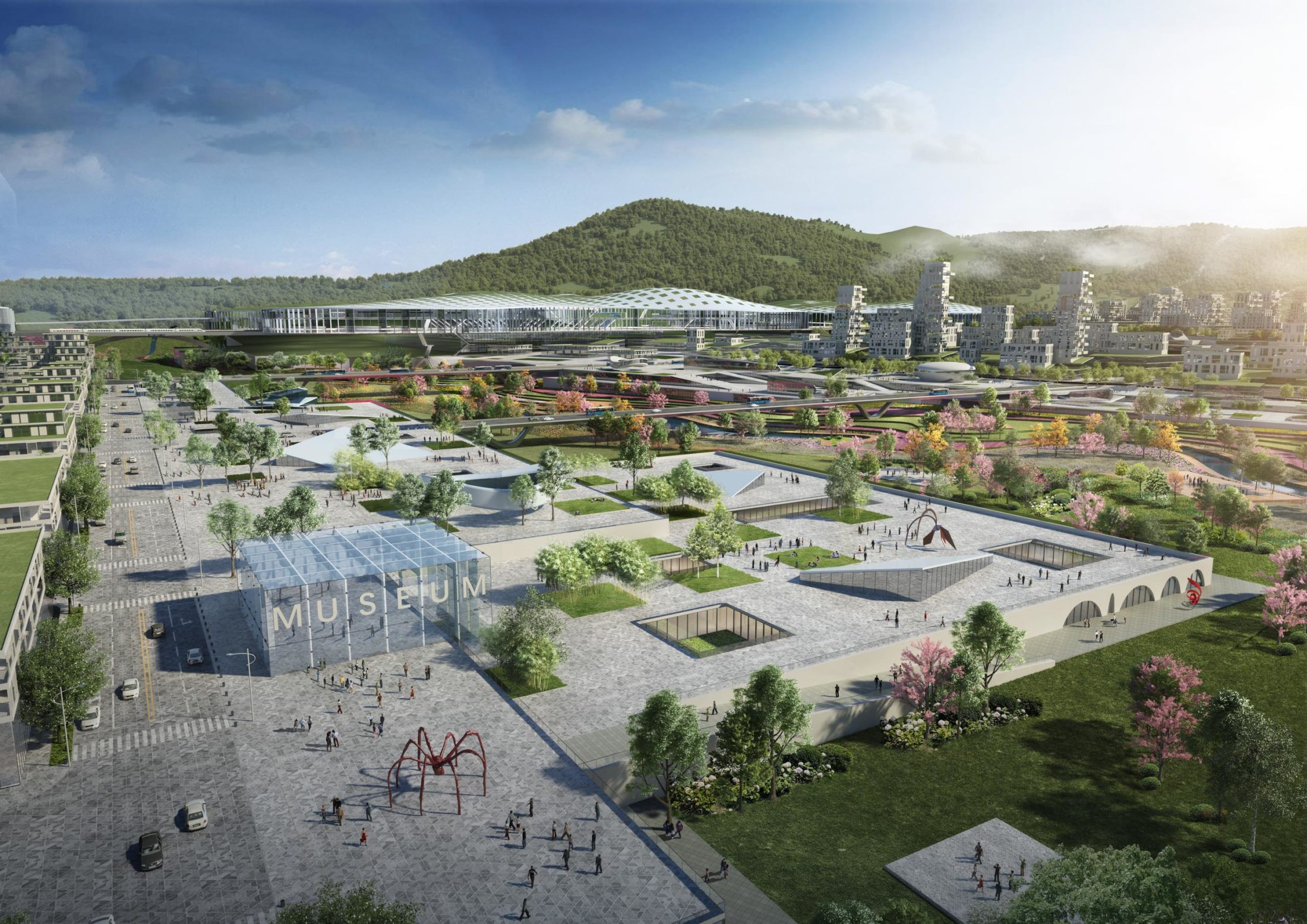
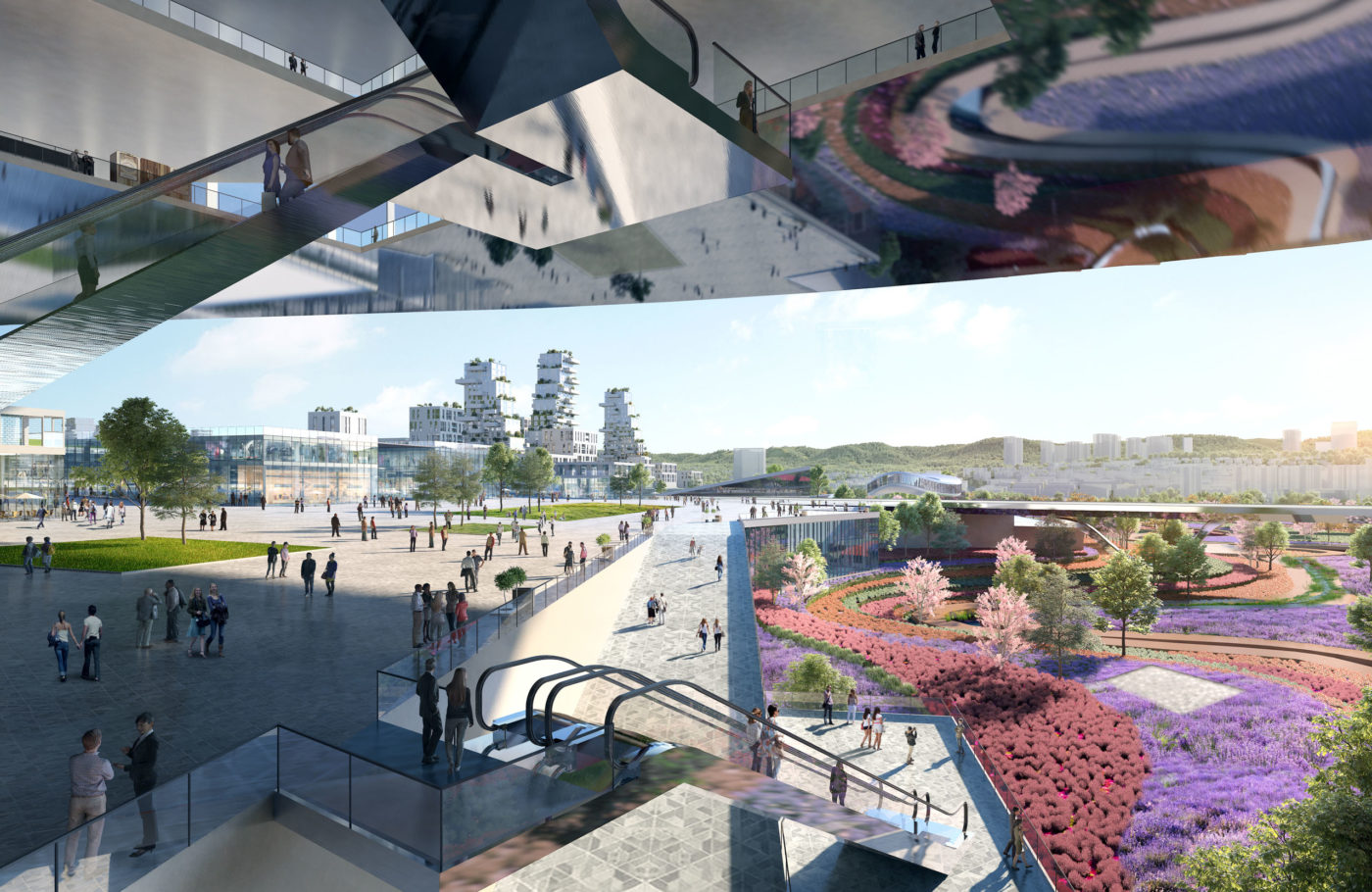
The project is part of President Xi Jingping’s “One Belt One Road” initiative, which outlines the development of a new Silk Road through a series of railway and sea routes between China and Europe. Chongqing is one of the fastest growing cities in southwest China, currently undergoing extensive urban development, spurred by the Chongqing East Railway Station infrastructure project.
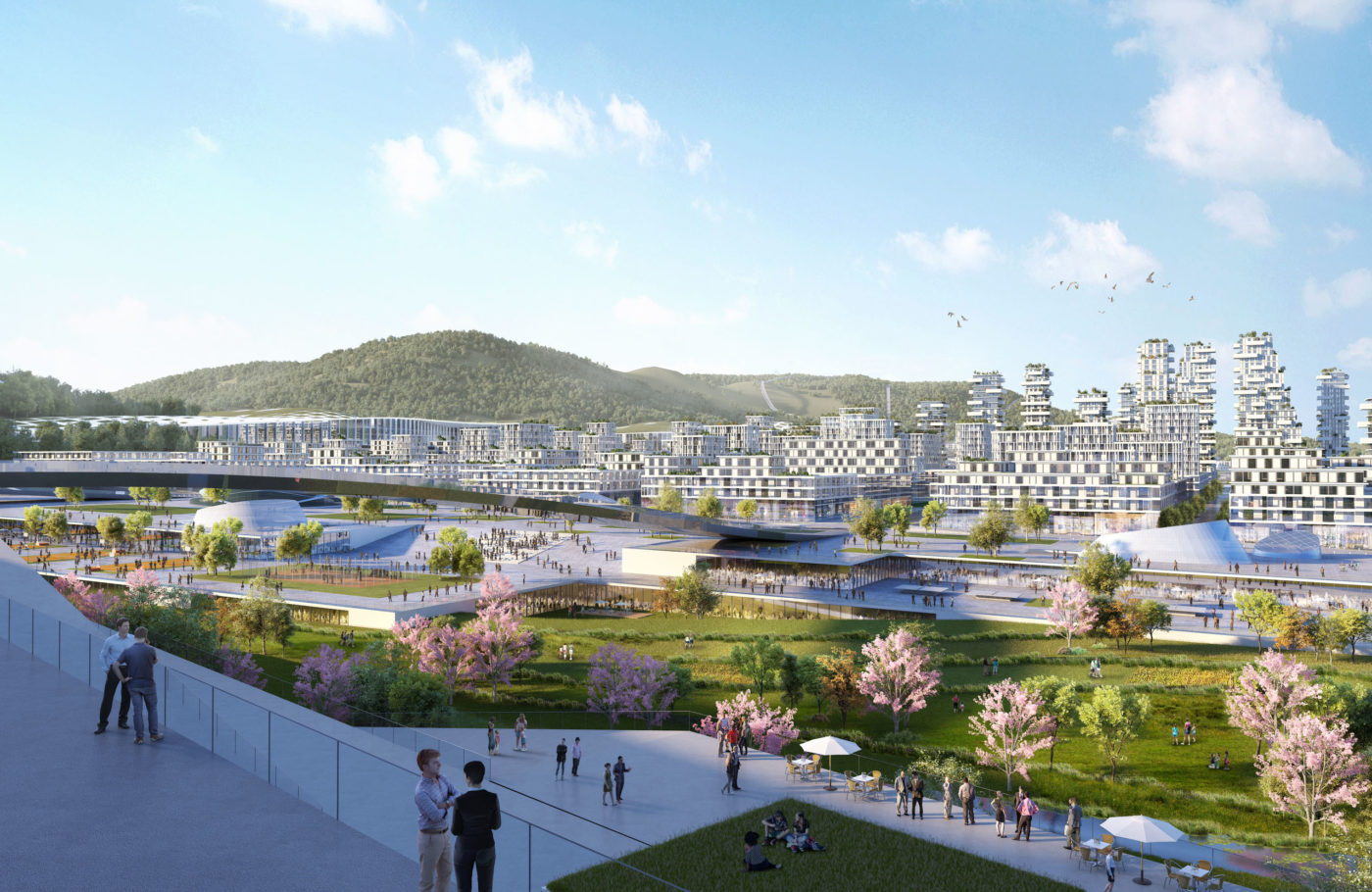
To assert its showcase role as the urban habitat of the future in tune with the quality of its environment (Yangtze Valley), the undertaking is at the crossroads of multiple strategic challenges. The project seeks to integrate cultural services, the river and the mountains through sustainable and innovative urban development within a balanced interpretation of tradition
and modernity. This involves reinventing the typical architecture of Chinese railway stations
by converting it into a structural element of the landscape, as an interface of the mountains it reflects with the city that it serves.
The concept of the “three scenic valleys” linking the mountain to the river is the inhabitants’ outstretched hand towards nature. The various proposed plans and activities, unique to each valley and of different scales, foster the exchanges between the city and the surrounding natural features. The central valley is devoted to botanical cultures (rare flowers and ancient or exotic food-producing vegetation), the northern valley follows the outline of an orchard, while the southern valley is a future space for vegetable gardening. The project covers three scales of involvement – at city, urban facility and architectural level – in which construction focuses on eco-diversity by defining open-type, cross-permeating and light-filled built spaces. Thereby it assigns a major place to nature and the spirit of the mountain that it echoes in the new river landscapes, the theme parks and the urban amenities built around the railway station to the benefit of pedestrians, as the new urban hub of Chongqing.
- Customer:Chongqing Urban Planning and Design Institute
- Team:Architecturestudio (lead consultant), Institut de Tianjin
- Program:Railway station
- Year:2013
- Surface:300 hectares
- Status:2019
Similar programs

Aménagement du port ouest, La Réunion, France
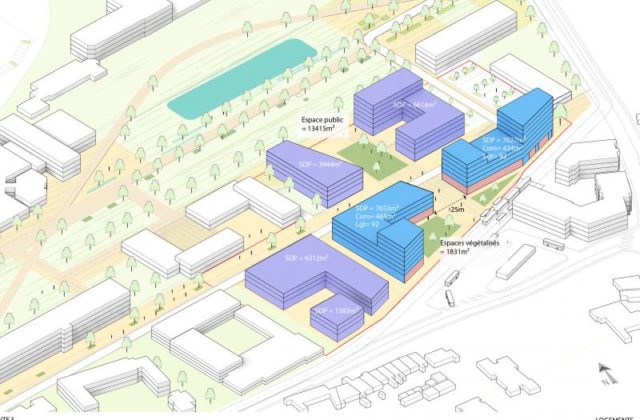
Campus de Talence, Pessac et Gradignan – secteur Est (sciences technologiques), Bordeaux, France

Etude de Master plan des quartiers d’Anoumabo et de la SICOGI à Marcory, Abidjan, Côte d'ivoire

Urban Business Lane, New Cairo, Egypt

Nanterre-la-Folie train station, Nanterre, France

Urban coherence and development project (Courbevoie, La Garenne-Colombes, Nanterre, Rueil, Suresne), Courbevoie, La Garenne-Colombes, Nanterre, Rueil, Suresnes, France
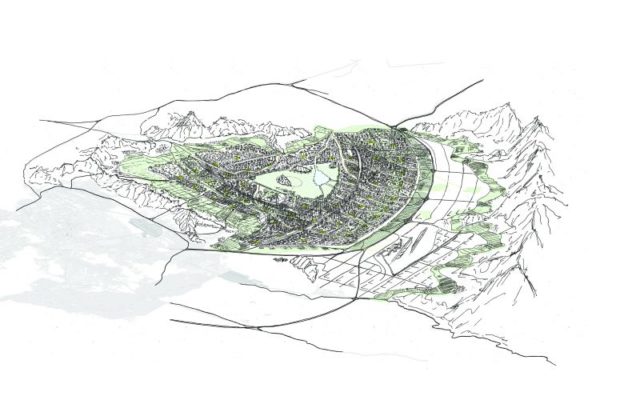
Designing Kabul New City, Kaboul, Afghanistan
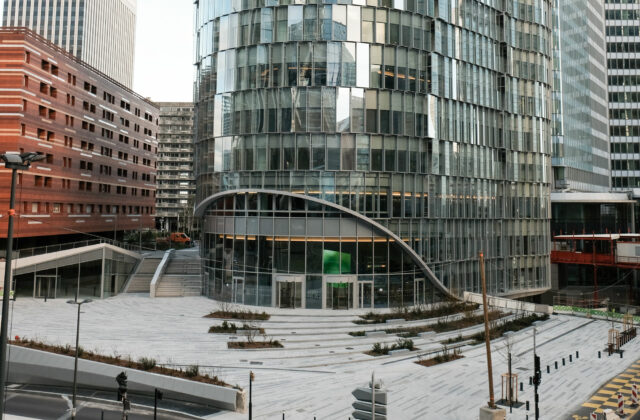
Public area of the Saisons district, La Défense, France
